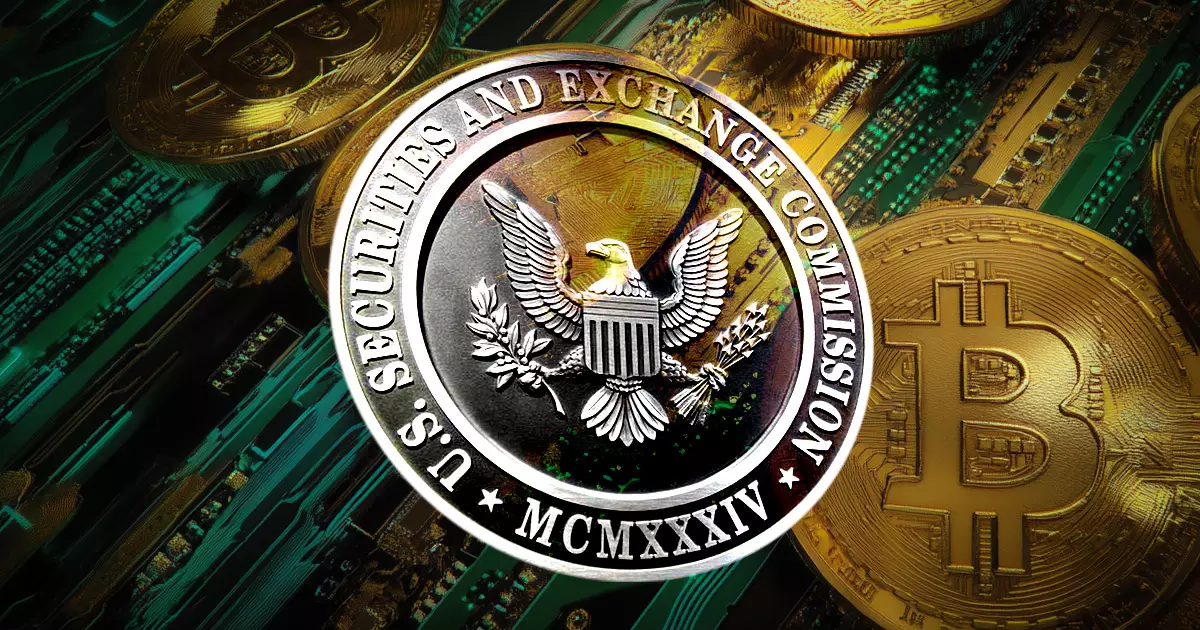The world of cryptocurrency stands on the precipice of transformation, driven by the fervent push from institutional giants like BlackRock and advocacy groups such as the Crypto Council for Innovation. However, the recent meetings with the US Securities and Exchange Commission (SEC) expose more than just ambition; they reveal an uncomfortable truth about the regulatory environment—a space filled with uncertainty, skepticism, and, unfortunately, stagnation. With the SEC’s Crypto Task Force actively engaging major players to define the future of crypto exchange-traded products (ETPs), we must critically examine the concerns and implications that arise from these discussions.
Power Struggles: Institutions vs. Regulators
At the heart of the ongoing conversations lies a power struggle between institutional interests and regulatory foresight. BlackRock, equipped with its vast resources and a cadre of experienced executives, seeks to pave the way for crypto ETPs. In its meeting with the SEC, BlackRock presented a structured approach to navigating the murky waters of in-kind redemptions and capital markets. However, amid this expert dialogue lies a tension: can regulators adapt to the rapid evolution of blockchain technology? The SEC appears burdened by its own cautious mandates, occasionally stifling innovation while other nations embrace the digital currency revolution.
Compounding this issue is how the SEC has frequently positioned itself against the very entities driving technological breakthroughs. The fear of market manipulations and investor losses weighs heavily on the minds of regulators, leading to regulatory hesitations that could hinder the sector’s growth. This ongoing duel raises philosophical questions about the role of governance in emerging industries—should it operate as a guiding hand, or does it risk becoming a throttling force?
Staking: A Revolutionary Yet Risky Proposition
A particularly contentious topic within these conversations is staking, a process critical to proof-of-stake (PoS) blockchain systems such as Ethereum and Solana. BlackRock and the Crypto Council for Innovation highlighted various staking models, including custodial and non-custodial staking, which could profoundly influence the returns and functionality of crypto ETPs. But is the allure of staking robust enough to hide the inherent risks associated with it?
When discussing staking, potential pitfalls such as diminishing investor returns and volatility cannot be glossed over. The premise that staking can provide passive income is alluring, but it obfuscates the reality that market fluctuations could dramatically impact both ETP valuations and staking rewards. A regulatory framework that inadequately addresses these risks could mislead investors and lead to unforeseen consequences—the proverbial ticking time bomb of the financial landscape.
Investor Protection vs. Innovation
Another layer to consider is the crucial balance of investor protection and fostering innovation. Stakeholders like Jito Labs proposed models that both preserve liquidity and allow for staking—innovative concepts intended to bridge the gap between regulatory caution and the need for financial progress. Yet, the SEC’s deliberation over these proposals raises the concern that excessive regulation may deter innovation rather than encourage it.
Additionally, this dichotomy points to a broader philosophical divide within financial governance. Should regulators shield investors from an evolving and complex landscape, or should they encourage the disruptive potential that blockchain promises? While safeguarding the public interest is commendable, creating hurdles for advancing technology can result in a stifling industry devoid of competition and breakthroughs.
Taking Responsibility: An Industry Position
As institutions like BlackRock navigate this labyrinth of compliance and regulation, they also face an ethical obligation to their stakeholders. Rather than merely seeking regulatory clearance to offer crypto ETPs, these entities have a unique responsibility to ensure that their financial products are transparent, accountable, and genuinely beneficial for the average investor. The dialogue surrounding staking, and the complexities that come along with it, should compel financial giants to be stewards of blockchain transparency.
This notion extends beyond compliance. Industry leaders should foster an environment where crypto is seen not as a speculative gamble but as a legitimate avenue for wealth creation—a paradigm shift that is urgently needed if blockchain and crypto are to gain widespread acceptance.
The recent engagements between the SEC, BlackRock, and the Crypto Council for Innovation reflect a crucial crossroads that could define the future of crypto and its integration into traditional finance. The outcome of these discussions may very well dictate the rules of the game for years to come, but we must tread carefully. The stakes are high, and while innovation requires regulatory grounding, each meeting, each proposal, and each framework must be approached with an awareness of the broader implications. The balancing act between security and innovation stands as a testament to the industry’s resolve and willingness to adapt amidst uncertainty.
















Leave a Reply